Worksheet Solutions: Journey of a River | Worksheets with Solutions for Class 5 PDF Download
Q1: Choose the correct option for each question.
(i) Where does the Godavari River originate?
A) Bay of Bengal
B) Western Ghats
C) Himalayas
D) Deccan Plateau
Ans: B) Western Ghats
(ii) What is the primary use of the water from the Godavari River?
A) Recreation
B) Drinking, cooking, and irrigation
C) Industrial purposes
D) None of the above
Ans: B) Drinking, cooking, and irrigation
(iii) How long is the Godavari River?
A) 1,100 kilometres
B) 1,465 kilometres
C) 2,000 kilometres
D) 800 kilometres
Ans: B) 1,465 kilometres
(iv) What is the name of the dam mentioned that affects the Godavari River?
A) Bhakra Nangal Dam
B) Polavaram Dam
C) Hirakud Dam
D) Sardar Sarovar Dam
Ans: B) Polavaram Dam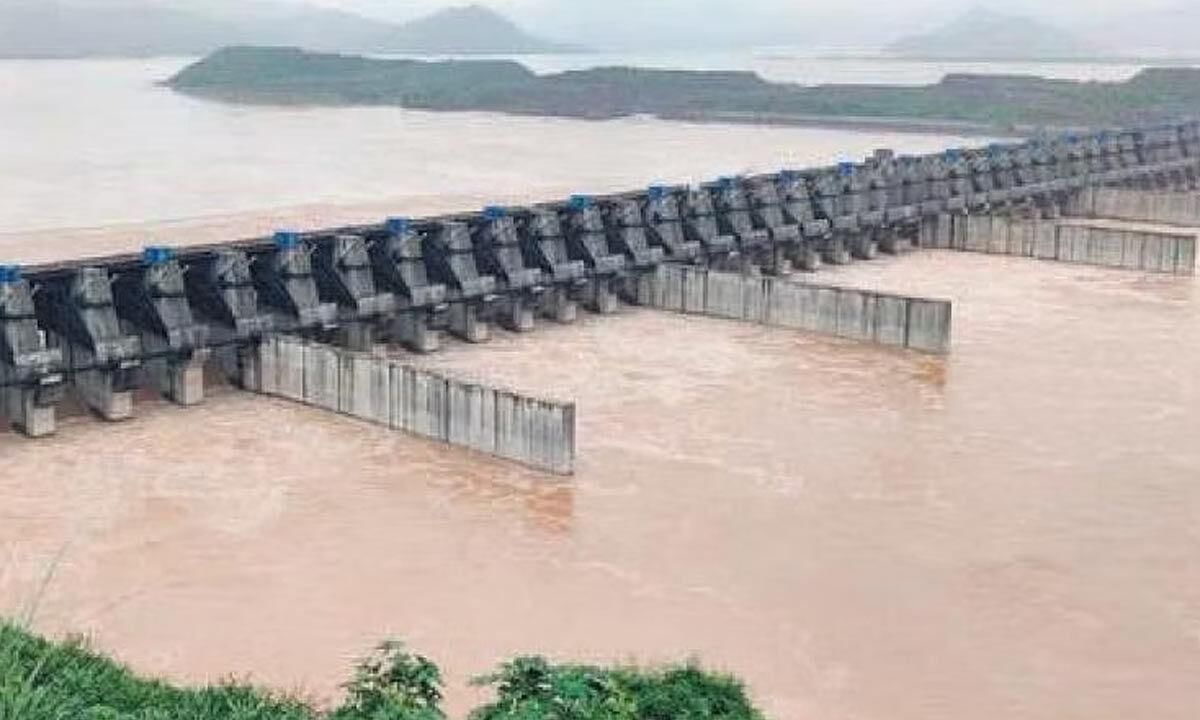 Polavaram Dam
Polavaram Dam
(v) What is an important reason for keeping the Godavari River clean?
A) To maintain the beauty of the river
B) To ensure the health of people and wildlife
C) To increase tourism
D) To reduce flooding
Ans: B) To ensure the health of people and wildlife
Q2: Fill in the blanks with the correct words from the chapter.
(i) The Godavari River is also known as ________ Ganga.
(ii) The Godavari River flows into the ________ Sea.
(iii) The Godavari is the ________ longest river in India.
(iv) The Godavari River is a ________ river, meaning it flows all year.
(v) ___________ are smaller rivers that join the Godavari during its journey.
Ans:
(i) The Godavari River is also known as Dakshina Ganga.
(ii) The Godavari River flows into the Bay of Bengal.
(iii) The Godavari is the second longest river in India.
(iv) The Godavari River is perennial, meaning it flows all year.
(v) Tributaries are smaller rivers that join the Godavari during its journey.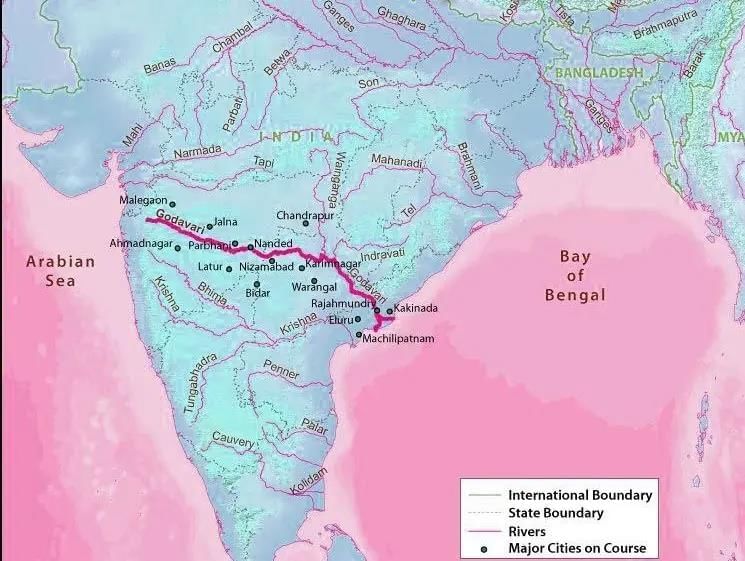 Flow of Godavari River
Flow of Godavari River
Q3: State whether the following statements are True or False. Correct the false statements.
(i) The Godavari River has several dams built on it for water storage.
Ans: True
(ii) The Godavari River is the longest in India.
Ans: False
(iii) Floods can cause damage to homes and agriculture.
Ans: True
(iv) The Godavari River flows only during the rainy season.
Ans: False
(v) The Godavari River is important for both people and wildlife.
Ans: True
Q4: Match the items in Column A with the correct descriptions in Column B.
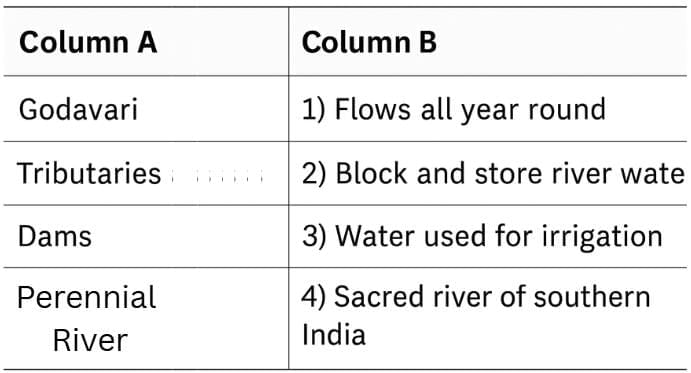
Ans:
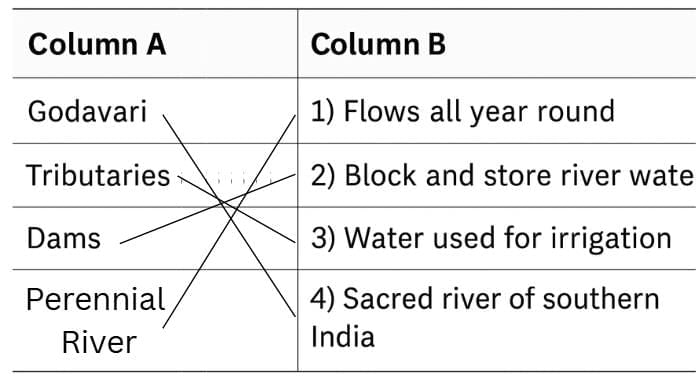
Q5: Answer the following questions in 2-3 sentences each.
(i) Where does the Godavari River begin its journey?
Ans: The Godavari River starts in the Brahmagiri Hills at Trimbakeshwar, Maharashtra.
(ii) What are tributaries?
Ans: Tributaries are smaller rivers that join a bigger river. They help the bigger river by adding more water as it flows.
(iii) Why is the Godavari River important for people living near it?
Ans: The Godavari River gives people fresh water to drink, cook, and clean. It also helps farmers grow food like rice and sugarcane.
(iv) What happens when it rains a lot and the river overflows?
Ans: When it rains too much, the river can flood. This can damage homes, roads, and crops, and make it hard for people to stay safe.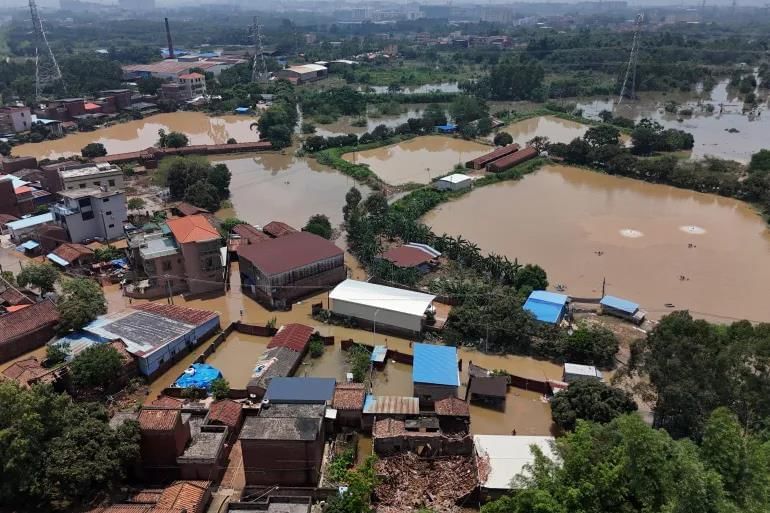 Buildings and Fields after Floods
Buildings and Fields after Floods
(v) How can we keep rivers clean?
Ans: We can keep rivers clean by not throwing trash in the water, using less plastic, and being careful with chemicals from homes and farms.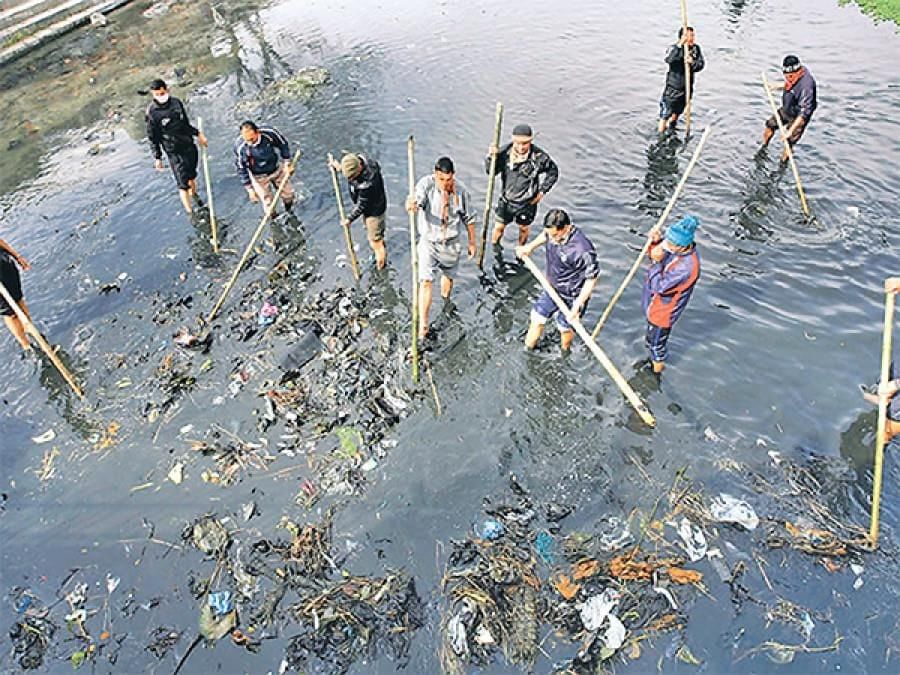 People cleaning the River
People cleaning the River
Q6: Answer the following questions in 4-6 sentences each. Use examples from the chapter to support your answers.
(i) Describe the three main stages of a river's journey, using the Godavari River as an example.
Ans: The Godavari River goes through three main stages in its journey. In the upper stage (young stage), it starts narrow and fast in the Brahmagiri Hills of the Western Ghats
It cuts through mountains to form V-shaped valleys. In the middle stage, it slows down, becomes wider, and creates bends called meanders as it flows through plains.
In the lower stage, it flattens out, widens a lot, and splits into streams to form a delta before meeting the sea at the Coringa Mangrove Forest.
(ii) Explain how the Godavari River supports life and helps people. Give at least three examples.
Ans: The Godavari River supports life and helps people in many ways.
First, it provides water for drinking, bathing, and washing clothes for people living nearby.
Second, it helps in farming by supplying water to grow crops in fields along its banks.
Third, it is home to fish, plants, birds, and animals, creating a habitat for wildlife.
Additionally, dams like the Jayakwadi Dam store their water to control floods and provide electricity, making life easier for communities. River helps in Farming, Tourism and Animals in creating habitat
River helps in Farming, Tourism and Animals in creating habitat
(iii) What challenges does the Godavari River face, and how do they affect it?
Ans: The Godavari River faces challenges like pollution from trash, chemicals, and factories, which harm the fish, plants, and animals living in it.
It can also flood during heavy rains, causing damage to nearby areas.
In summer, the river might run dry, making it hard for people and wildlife to get water.
These issues change the river's natural flow and make it less healthy.
(iv) What is a delta? Describe where the Godavari River forms its delta and why it's important.
Ans: A delta is the area where a river splits into many smaller streams before emptying into the sea, often forming a fan-like shape with fertile land.
The Godavari River forms its delta at the Coringa Mangrove Forest in Andhra Pradesh, where it meets the Bay of Bengal.
This delta is important because it creates rich soil for farming, supports mangrove forests that protect against storms, and provides a habitat for birds, fish, and other wildlife.
FAQs on Worksheet Solutions: Journey of a River - Worksheets with Solutions for Class 5
| $1. What are the main stages in the journey of a river? |  |
| $2. How does a river shape the landscape around it? |  |
| $3. What role do rivers play in the ecosystem? |  |
| $4. What are some human activities that impact rivers? |  |
| $5. Why are rivers important for human civilization? |  |





















